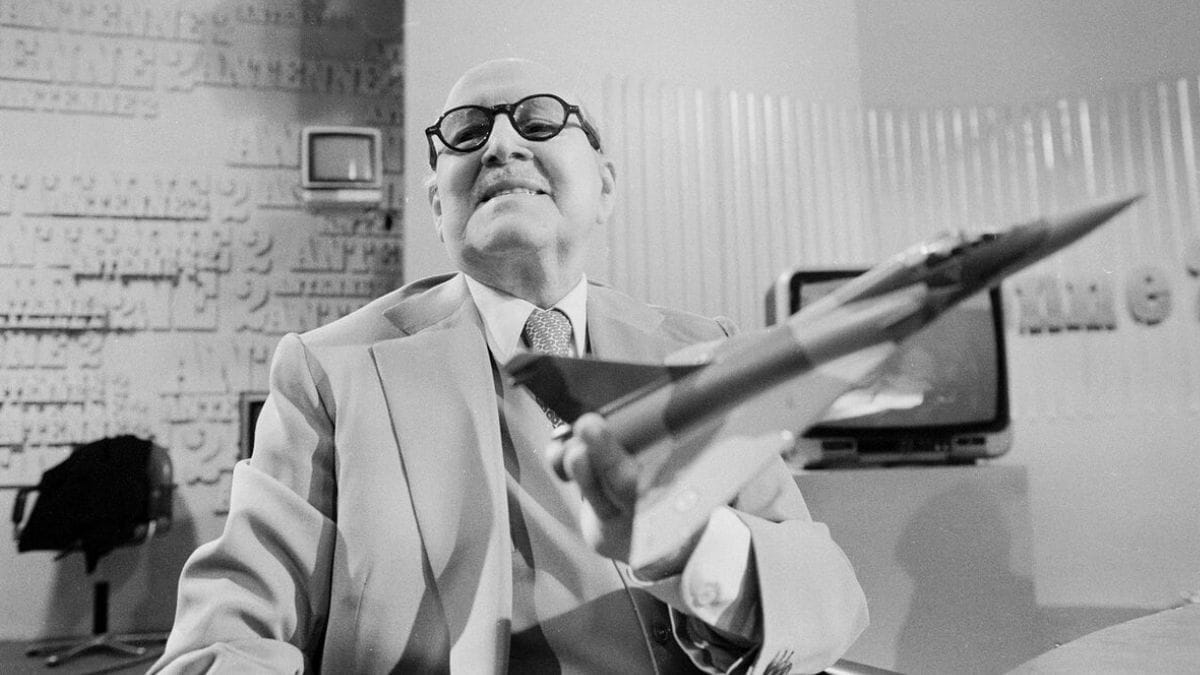A French engineer, entrepreneur, and politician, Marcel Dassault (January 22, 1892 – April 18, 1986) played a significant role in shaping the aviation industry in Europe during the mid-twentieth century. He was best known for his innovative designs for military aircraft and contributions to developing the French aerospace industry.
Background
Dassault grew up in a family of Jewish intellectuals deeply involved in the French arts and culture. Born in Paris, France, he was originally named Marcel Bloch but changed his name to Marcel Dassault during World War II. One of his interviews stated that One fine day when he was at the school playground, he looked at the sky, and that was the first time Marcel saw a plane; there and then, he knew that aviation had become a part of his heart and thoughts”. His early curiosity about technological innovation in general – and electricity in particular – became quickly noticeable. After getting his electrical engineering degree, he began working in the aeronautics industry.
Aviation Industry
In 1914, Bloch started working at “Laboratoire de RechercheAeronautiques” (Aeronautical Research Laboratory), where, with another prominent figure of early French aviation, Henry Potez, he created the “Societéd’EtudesAeronautiques” (Company of Aeronautical Studies) and built the SEA IV, a military observation aircraft, destined for the French Air Force. Dassault first contributed during World War I, served as a pilot in the French Air Force, and became a staunch advocate of air power as a means of military superiority. In 1929, Dassault founded Société des Avions Marcel Bloch (Marcel Bloch Aircraft Company), later known as Dassault Aviation. The company specialised in military aircraft design and manufacture, and it quickly gained a reputation for producing some of the most innovative and advanced aircraft in the world. In Courbevoie, he opens a factory, employing 700 workers. In 1936, the factory was nationalised and taken over by a mixed-capital concern, SNCASO, and Marcel became its CEO. He also established a new company, the “SocietéAnonyme des Avions Marcel Bloch” (Marcel Bloch Aircraft Company Ltd.). The company designs aircraft for SNCASO.
He also established a new company, the “SocietéAnonyme des Avions Marcel Bloch” (Marcel Bloch Aircraft Company Ltd.). The company designs aircraft for SNCASO.
The aeronautical sector experiences unprecedented growth during the years leading up to World War I. Under Marcel Bloch-Dassault’s leadership, the SNCASO goes from 1,500 to 7,000 workers. A new factory is created at Chateauroux Airport, bringing their total number to six. Marcel Bloch-Dassault left his post as SNCASO CEO at the beginning of 1940, followed by a difficult personal period in his life.
Marcel Dassault’s name came to be known worldwide for outstanding jet-powered aircraft. In 1946, he changed his name from Marcel Bloch to Marcel Bloch-Dassault and subsequently to Marcel Dassault. Marcel Dassault won a few contracts to supply a new fleet of jet fighters to the French Air Force in the years following the end of World War II.
His company became “GeneraleAeronautique Marcel Dassault” (General Aeronautics Marcel Dassault-GAMD) and started producing its first jet fighter, the Ouragan, in 1949. It was followed by the Mystere family of fighters from 1952 and the Mirage from 1956 to 1966, all produced along with the Falcon business jet beginning in 1963. With a capital of US$1.28bn (€1.07bn or F7bn), he became the first French billionaire in 1985. Among the most notable designs from Dassault were the MD 450 Ouragan, the first French jet fighter, and the Mirage series of jet fighters, which would go on to become some of the most widely used military aircraft in the world.
Apart from his work in aviation, newspapers and politics, Dassault was keen on cinema, architecture, the stock market and banking. The Legion of Honor’s Grand Cross, France’s highest honour, was earned by him for his services to his country. When he died, France’s government, high-ranking officials, and local and international media paid him an exceptional tribute. Marcel was the first funeral celebrated at Invalides for a French industrial businessperson. Throughout his life, Dassault remained deeply committed to the advancement of the aviation industry and was widely believed to be one of the most influential figures in the field.
Leaving behind a legacy of innovation and accomplishment that persists in shaping the way we think about aviation today.





